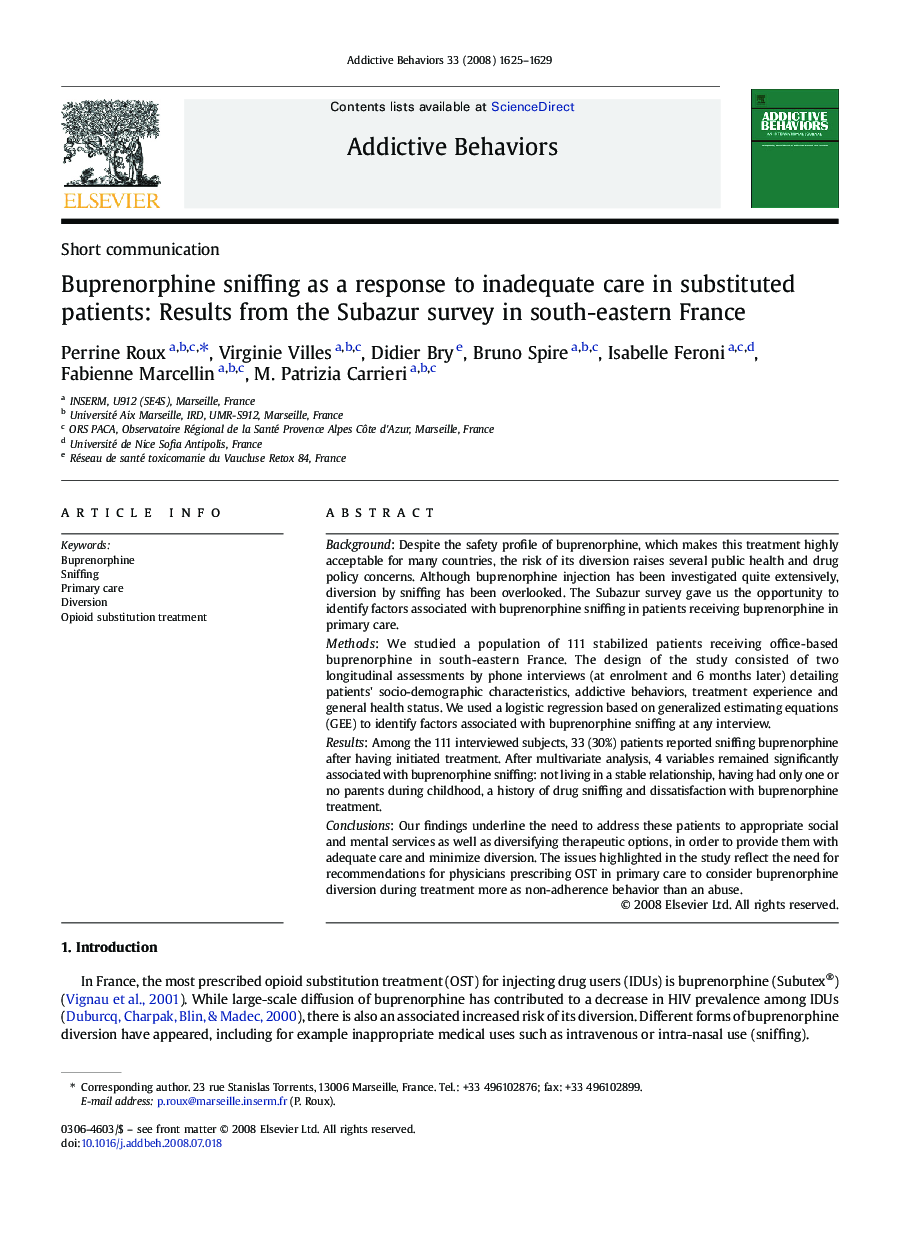| کد مقاله | کد نشریه | سال انتشار | مقاله انگلیسی | نسخه تمام متن |
|---|---|---|---|---|
| 900436 | 915443 | 2008 | 5 صفحه PDF | دانلود رایگان |

BackgroundDespite the safety profile of buprenorphine, which makes this treatment highly acceptable for many countries, the risk of its diversion raises several public health and drug policy concerns. Although buprenorphine injection has been investigated quite extensively, diversion by sniffing has been overlooked. The Subazur survey gave us the opportunity to identify factors associated with buprenorphine sniffing in patients receiving buprenorphine in primary care.MethodsWe studied a population of 111 stabilized patients receiving office-based buprenorphine in south-eastern France. The design of the study consisted of two longitudinal assessments by phone interviews (at enrolment and 6 months later) detailing patients' socio-demographic characteristics, addictive behaviors, treatment experience and general health status. We used a logistic regression based on generalized estimating equations (GEE) to identify factors associated with buprenorphine sniffing at any interview.ResultsAmong the 111 interviewed subjects, 33 (30%) patients reported sniffing buprenorphine after having initiated treatment. After multivariate analysis, 4 variables remained significantly associated with buprenorphine sniffing: not living in a stable relationship, having had only one or no parents during childhood, a history of drug sniffing and dissatisfaction with buprenorphine treatment.ConclusionsOur findings underline the need to address these patients to appropriate social and mental services as well as diversifying therapeutic options, in order to provide them with adequate care and minimize diversion. The issues highlighted in the study reflect the need for recommendations for physicians prescribing OST in primary care to consider buprenorphine diversion during treatment more as non-adherence behavior than an abuse.
Journal: Addictive Behaviors - Volume 33, Issue 12, December 2008, Pages 1625–1629